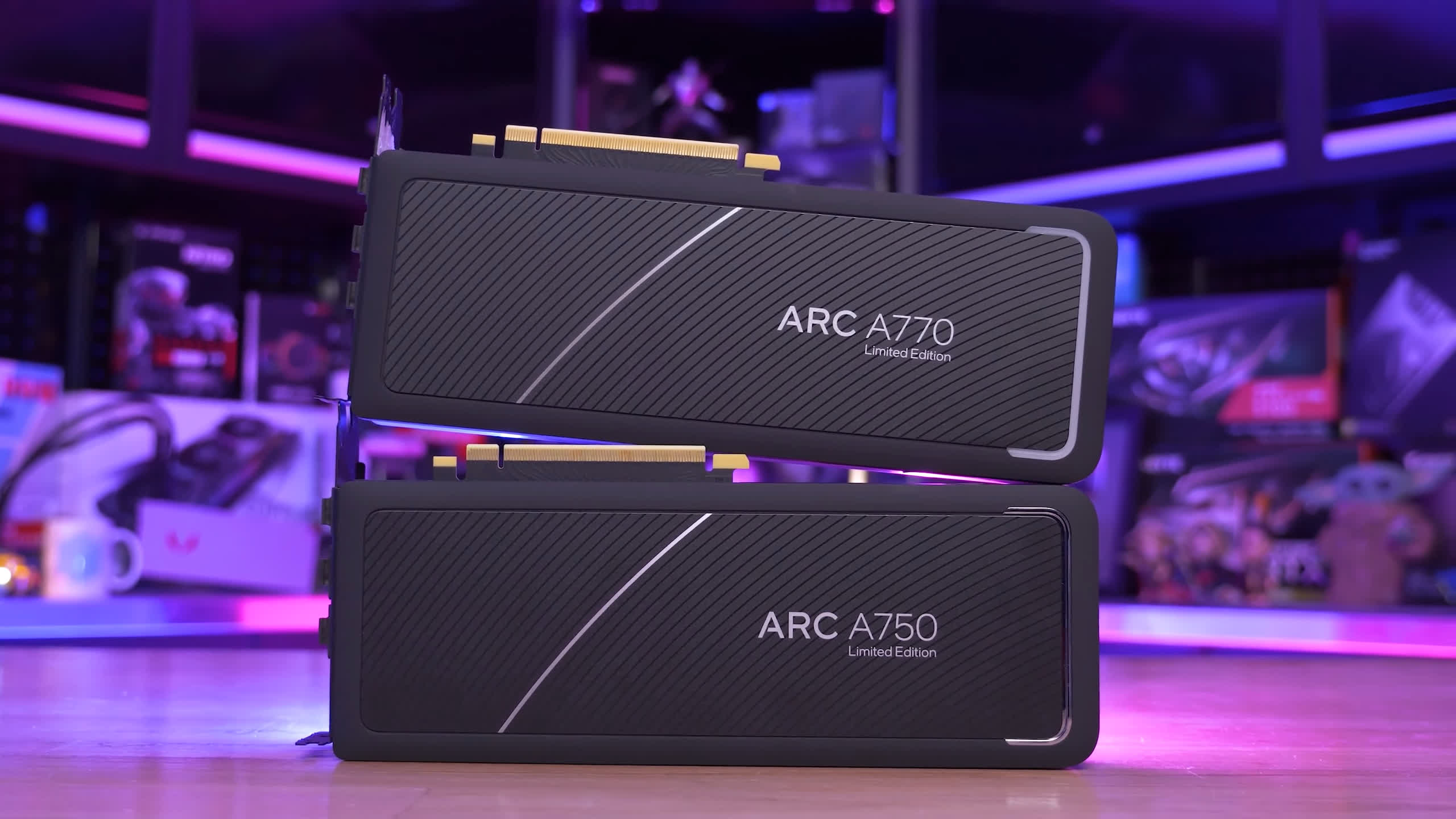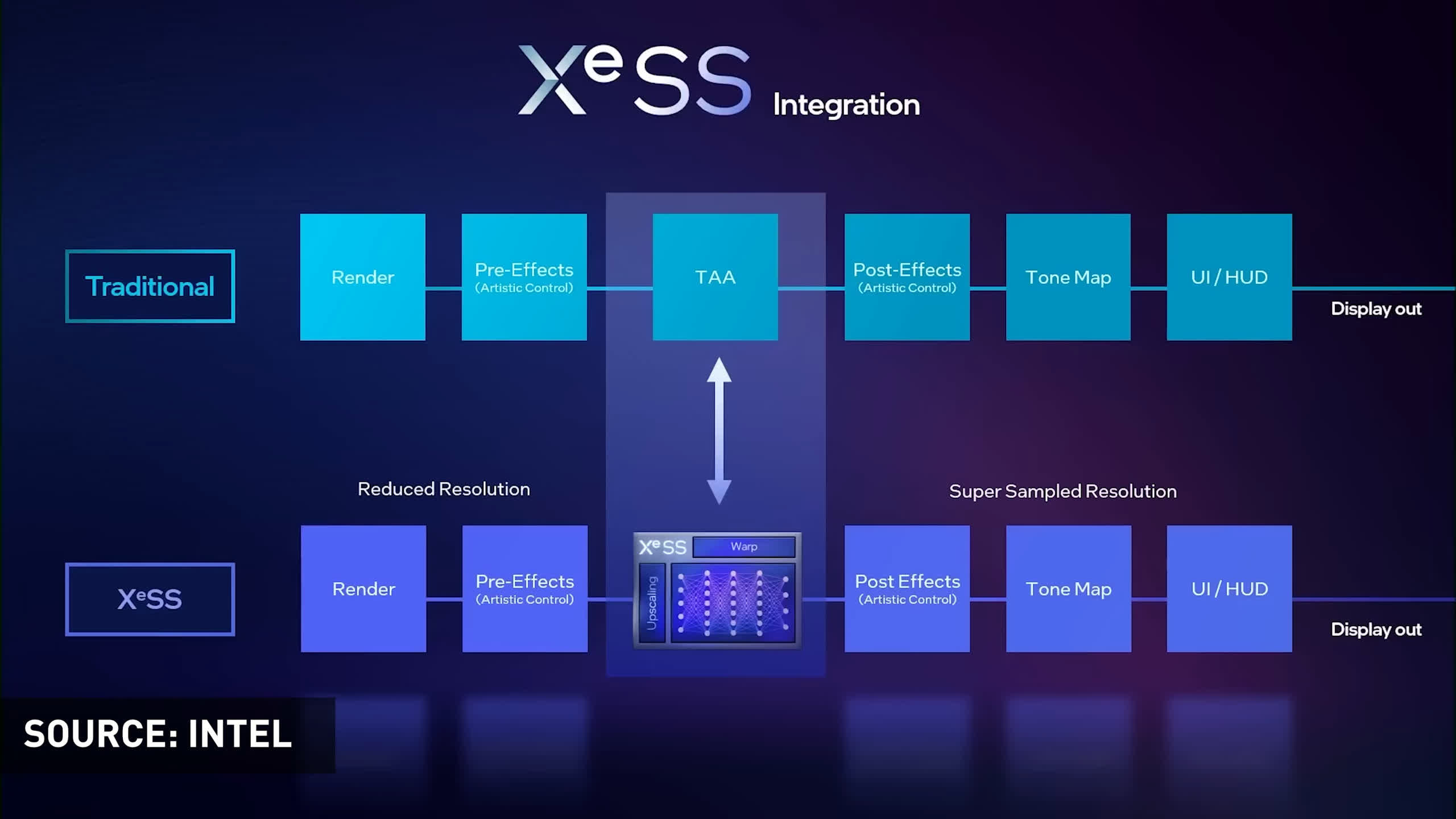Recap: Intel lifted the lid on two major updates to its Arc software stack at the end of last week. It announced a new driver that adds support for four recently released games and improves performance by ~5% in eight others, and a plugin for the Unreal Engine that makes it easier for developers to add XeSS to their games.

Intel has been working with developers to manually add XeSS to a fair few games (Intel has a mostly complete list here). It sounds like a fairly quick addition to make, but with the plugin it should be a downright trivial addition to any game that uses the Unreal Engine.
There are three versions of the plugin (on GitHub) for UE 4.0, 4.26, and 5.0, so games that are already under development with an older version of the engine should be able to add XeSS, too.
Of course, the plugin has the same limitations as baked-in XeSS. It doesn't support split screens or VR and it only works with the DirectX 12 API. It also works best on Intel Arc GPUs and struggles to compete against the more hardware-agnostic AMD FSR 2.0 in games that support both. FSR is similarly available as a UE plugin and is also open-source, which XeSS is not.

Intel also announced a new driver for the Arc A-series that promises wider compatibility, performance improvements, and bug fixes. Principally, it adds support for Marvel's Spider-Man: Miles Morales, Call of Duty: Warzone 2.0, Sonic Frontiers, and Dysterra. The driver is available now but still in beta. It should be bumped up to release in the next few weeks.
According to Intel release notes, the driver can improve performance by "up to" 3% in five titles: Marvel's Guardians of the Galaxy, Forza Horizon 5, Far Cry 6, Chorus, and Sniper Elite 5. It also pushes the performance up by 5% in Gotham Nights, 7% in Ghostwire Tokyo, and 8% in Dirt 5. Intel did its benchmarking with max or close to max settings at a mix of 1080p and 1440p.
Intel also fixed a few bugs in some popular titles. Doom Eternal no longer flickers on certain maps, Tom Clancy's Rainbow Six Siege now experiences consistent performance, the lighting is fixed in Death Stranding Director's Cut, and the vertical lines are gone from Forza Horizon 5. There are also numerous bug fixes for the Arc Control app that should bring it into the realm of usable, although it still has a long way to go.
There are plenty more known issues that Intel admits to in the patch notes, and the community knows of quite a few more. If you bought an Arc GPU you knew what you were getting, but let's focus on the positives. Intel is starting to live up to its promise of continuing to refine its drivers and software stack, and that's something for early adopters to be happy about.
https://www.techspot.com/news/96712-intel-boosts-arc-performance-new-drivers-unveils-xess.html